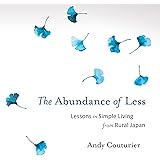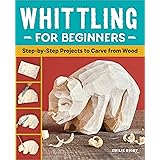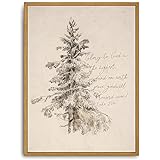The Ganesh Chaturthi festival culminates in the heartfelt Ganesh Visarjan. Devotees seek to offer the most authentic naivedyam. The video above beautifully sets the scene with devotional music. It also subtly hints at this profound culinary tradition. This ritual of farewell deserves special culinary tributes. Understanding these offerings enriches the entire experience. Truly traditional dishes are key to a complete Visarjan ceremony. This guide delves into two such essential preparations: Churme ke Modak and Gopal Kala.
The Sacred Culmination: Ganesh Visarjan and Naivedyam
Ganesh Visarjan signifies Lord Ganesha’s departure. This final day carries deep spiritual weight. Devotees believe Ganesha takes away their troubles. Offerings of food, known as naivedyam, are crucial. They symbolize gratitude and devotion. These dishes are not merely meals. They are a bridge between the devotee and the divine. The choicest ingredients become expressions of love. Every preparation holds profound cultural meaning.
Naivedyam offerings are more than food. They are consecrated meals. They become ‘prasad’ after Ganesha’s blessing. This prasad is then shared among family. It signifies divine grace and communal bonding. For Ganesh Visarjan, specific dishes hold prominence. They reflect regional culinary heritage. Each bite connects us to ancient traditions. The act of cooking itself becomes a prayer.
Churme ke Modak: A Delectable Tribute
Modak is Lord Ganesha’s favorite sweet. Its significance is unparalleled. Many varieties exist, each unique. Ukadiche Modak uses steamed rice flour. However, Churme ke Modak offers a different texture. This variant originates from Rajasthani and Gujarati traditions. It repurposes a beloved churma mixture. Churma is a coarse, sweet crumbly mixture. It provides a distinct flavor profile.
Crafting Churme ke Modak is an art. It begins with making the churma. Whole wheat flour is often used. This flour is kneaded into a firm dough. Small pieces are then fried in ghee. This frying imparts a rich, nutty flavor. The fried pieces are then coarsely ground. Jaggery and ghee are typically added. These bind the churma together. Sometimes dry fruits and nuts are incorporated. Cardamom powder elevates the aroma. The mixture is then pressed into modak molds. These molds give them their iconic shape. The resulting modak is rustic yet incredibly flavorful. Its texture is crumbly, unlike steamed versions. This dry nature ensures a longer shelf life too. Churme ke Modak offers robust sweetness. It is a hearty and satisfying offering. This modak represents earthy abundance. It perfectly complements the festive mood.
Recipe Insight: Churme ke Modak Preparation
The journey to perfect Churme ke Modak starts simply. Gather coarse whole wheat flour (atta), ghee, and jaggery. A pinch of salt balances flavors. Water is needed for the dough. First, prepare a stiff dough with flour and water. Add a spoon of ghee for tenderness. Divide the dough into small, thick discs. Fry these discs in hot ghee until golden. The discs should be cooked through. This process ensures thorough cooking. Cool the fried discs completely. Break them into smaller pieces. Grind these pieces into a coarse powder. Use a food processor for efficiency. Now, melt jaggery in a pan with a little ghee. Add the ground churma mixture. Stir well to combine. Incorporate finely chopped nuts like almonds or cashews. A dash of cardamom powder is essential. Mix thoroughly until crumbly but bindable. Press the mixture into modak molds firmly. Demold carefully to preserve shape. Arrange these divine offerings on a platter. They are now ready for Ganpati’s bhog.
Gopal Kala: A Devotional Medley
Gopal Kala is a traditional Maharashtrian dish. It is particularly associated with Janmashtami. However, it finds its place in Ganesh Visarjan too. This dish is a symbolic representation of ‘dahi handi’. It connects Lord Ganesha to Lord Krishna. The narrative suggests Ganesha enjoyed Krishna’s favorite foods. Gopal Kala is a simple yet wholesome mixture. It combines various everyday ingredients. This offering embodies humility and gratitude. It’s a symphony of textures and tastes.
This savory-sweet medley offers refreshment. Poha (flattened rice) forms its base. Curd (dahi) provides a creamy tang. Cucumber adds a fresh crunch. Green chilies impart a subtle heat. Cumin powder offers an earthy depth. A tempering of mustard seeds and ghee brightens the flavors. Sometimes, a touch of sugar or jaggery is added. This balances the savory notes. Gopal Kala is often served chilled. It is light and easily digestible. This makes it ideal for offerings. It contrasts well with heavier sweets. The dish represents life’s simple pleasures. It signifies the bounties of nature. Offering Gopal Kala acknowledges simple abundance. It is a gesture of pure devotion.
Recipe Insight: Crafting Gopal Kala
Start with medium thick poha. Wash it lightly and drain. Let it soften for a few minutes. This ensures a tender texture. In a bowl, combine the softened poha. Add fresh, thick curd. Mix well until poha is coated. Now, add finely chopped cucumber. Include chopped green chilies for zing. Fresh grated coconut lends sweetness. Cumin powder provides warmth. Season with salt to taste. For the tempering, heat ghee in a small pan. Add mustard seeds and let them splutter. Then add curry leaves. Pour this tempering over the poha mixture. Mix everything gently to combine. Some prefer a hint of sweetness. A teaspoon of sugar or jaggery can be added. Garnish with fresh coriander leaves. Serve chilled as a refreshing prasad. This simple preparation belies its profound significance. It truly embodies the spirit of an authentic offering.
The Ritual of Offering: Beyond the Plate
Presenting Churme ke Modak and Gopal Kala is ritualistic. The dishes are arranged meticulously. They are placed before the idol of Ganesha. A prayer is often recited. Incense sticks and lamps are lit. The offering is a silent communion. It is a moment of deep reverence. The food represents our devotion. Its purity symbolizes our intentions. This sacred act concludes the Visarjan. The spirit of Ganesha fills the home. The memory of these offerings lingers. These culinary traditions bind us to our heritage.











